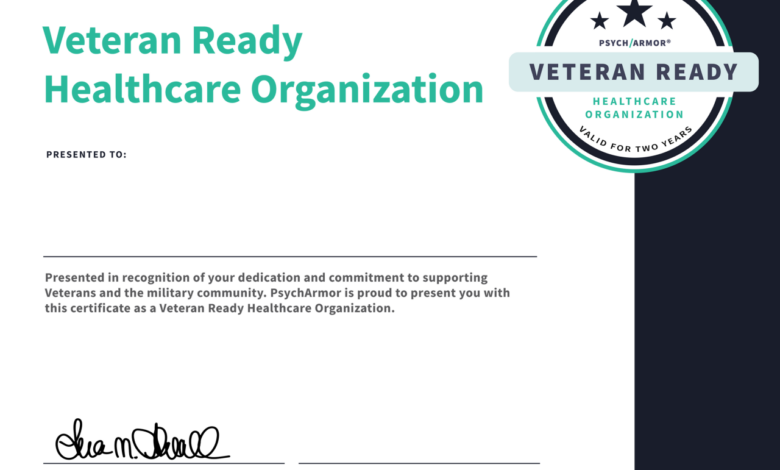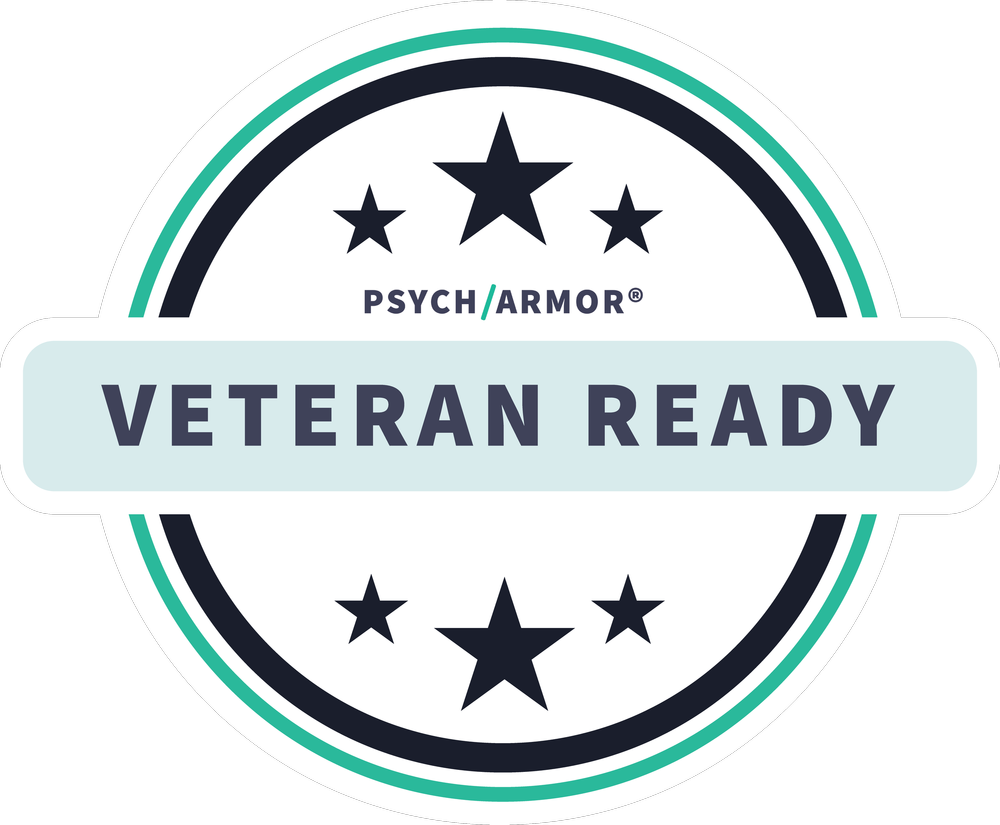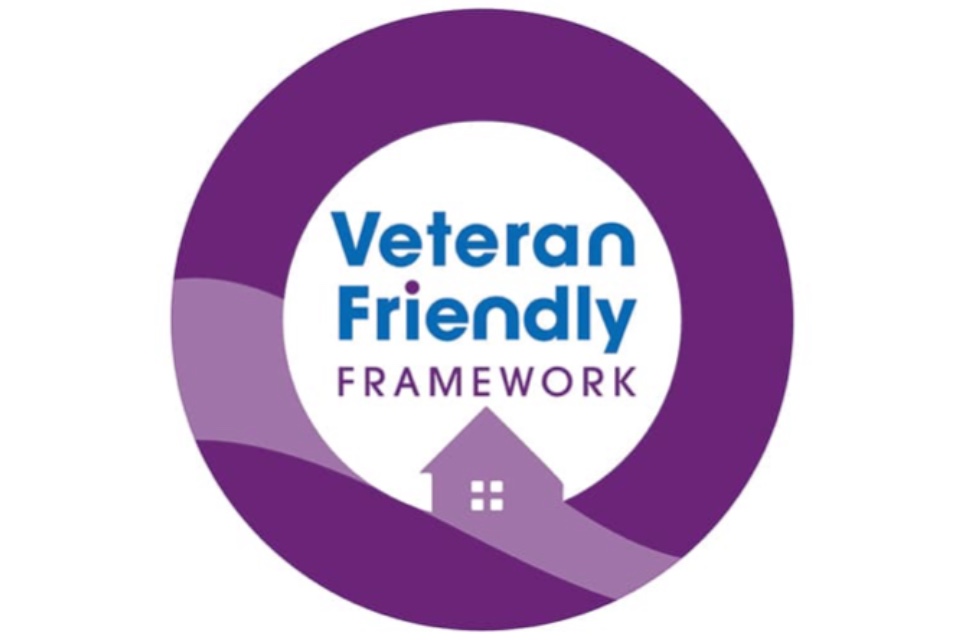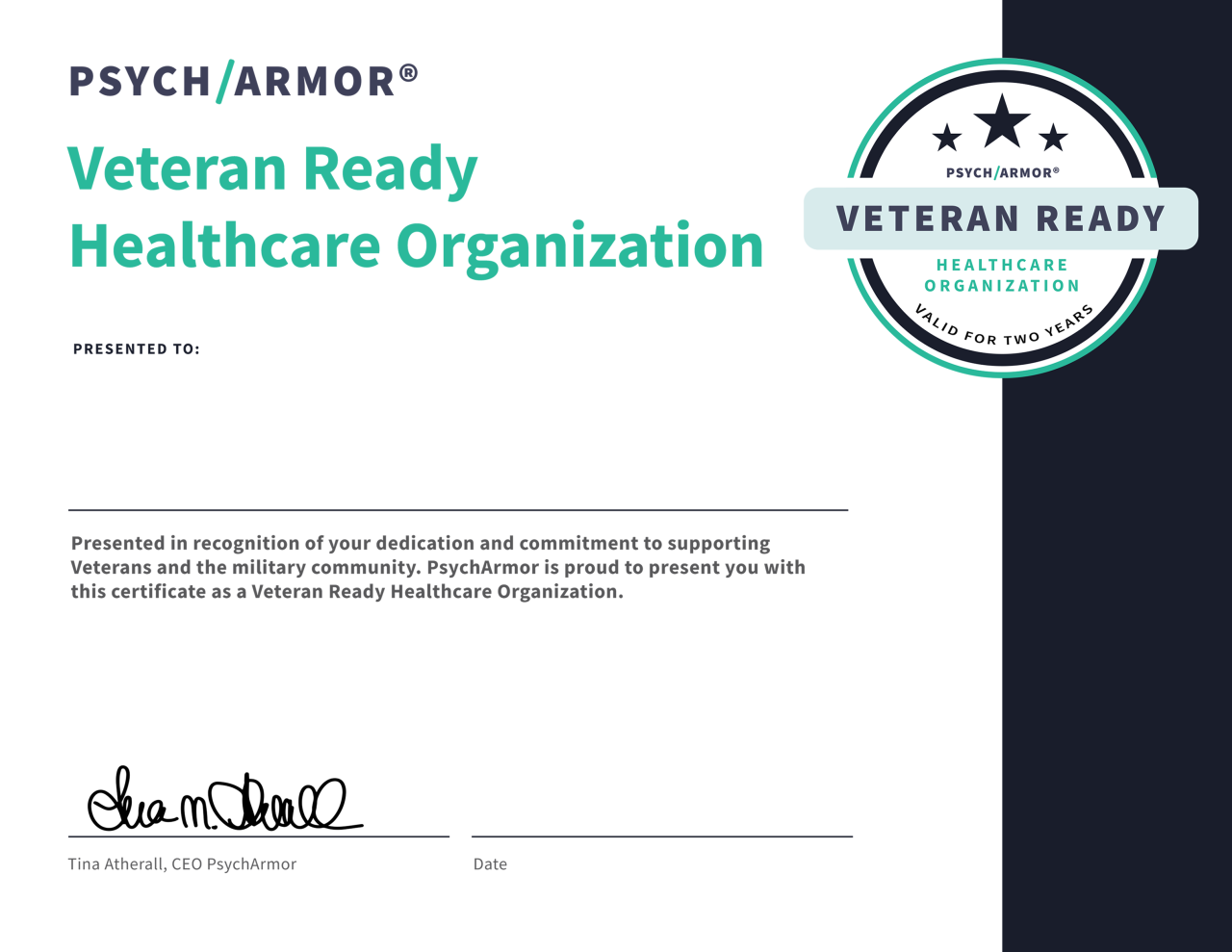
Veteran Ready vs Veteran Friendly A Deep Dive
Veteran ready vs veteran friendly: understanding the subtle yet significant difference is crucial for both employers and veterans seeking employment. This exploration delves into the nuances of each term, examining employer perspectives, veteran expectations, and the supporting programs designed to bridge the gap between military service and civilian careers.
This in-depth look at the differences between “veteran ready” and “veteran friendly” workplaces will help both employers and veterans understand the specific needs and expectations of the veteran community in the job market. We’ll analyze the benefits for each party, and explore potential challenges and support programs to foster successful transitions.
Defining the Terms
Understanding the subtle yet important differences between “veteran ready” and “veteran friendly” is crucial for creating supportive environments for returning service members. These terms, while seemingly interchangeable, represent distinct approaches to addressing the needs of veterans. This distinction impacts everything from job postings to community outreach programs, and knowing the difference is key to effective support.The language we use to describe organizations and their approaches to veteran employment and inclusion directly influences how veterans perceive their opportunities and the support they receive.
Veteran Ready
A “veteran ready” organization demonstrates a proactive and intentional approach to supporting veterans’ transition into civilian life. It’s more than just a welcoming attitude; it’s a structured plan for integrating veterans into the workforce, leveraging their unique skills and experiences. This includes a comprehensive understanding of the challenges veterans face, actively seeking veterans for available positions, and providing targeted support and resources to ensure successful integration.
These resources may include mentorship programs, tailored training, and job placement assistance. “Veteran ready” implies a strategic commitment to making a tangible difference in veterans’ lives.
Veteran Friendly
A “veteran friendly” organization, on the other hand, exhibits a more general, often reactive, approach to supporting veterans. It often involves a positive attitude towards veterans and may offer some support, but without the structured, intentional planning of a “veteran ready” organization. A “veteran friendly” environment might include a general welcoming atmosphere, but may lack the specific programs and resources necessary for veterans to thrive.
This difference lies in the level of proactive planning and investment in veteran success.
Comparison and Contrast
While both terms aim to support veterans, they differ significantly in their approach and commitment. “Veteran ready” organizations actively integrate veteran needs into their strategies, whereas “veteran friendly” organizations might simply acknowledge the presence of veterans. The key distinction lies in the depth of support offered and the intentional structure of the programs and initiatives.
Nuances in Meaning
The context surrounding these terms is critical. A company describing itself as “veteran friendly” might simply have a few veteran employees and a general positive attitude. Conversely, a “veteran ready” company would likely have a detailed plan for recruiting, training, and retaining veterans, with specific resources tailored to their needs. The nuance lies in the proactive nature of the support offered.
One is a general descriptor, the other is a strategic imperative.
Key Characteristics
| Veteran Ready | Veteran Friendly |
|---|---|
|
|
Employer Perspectives

Understanding the nuances of veteran hiring is crucial for both employers and job seekers. This section delves into common misconceptions about veteran readiness, the rationale behind prioritizing “veteran ready” candidates, and the steps employers can take to foster a truly “veteran friendly” environment. Ultimately, we’ll explore the tangible benefits of hiring veterans and how to implement policies that reflect this commitment.Common misconceptions about veteran readiness often stem from a lack of understanding of the diverse experiences and skills veterans bring to the table.
Thinking about veteran-ready vs. veteran-friendly initiatives? Oshkosh is taking a step in the right direction with a new development near the Fox River, focusing on creating opportunities for veterans. This new project, as detailed in oshkosh eyes new development near fox river , could be a model for other communities looking to support veterans in a tangible way, making the difference between simply being “friendly” and actively “ready” to help veterans thrive.
This highlights the need for more initiatives that directly address the unique needs of veterans.
Many believe that all veterans possess a specific skillset, such as leadership or technical expertise, without recognizing the wide range of roles and responsibilities encountered during military service. Additionally, the assumption that veterans need extensive onboarding or require specific accommodations can be inaccurate and perpetuate a stereotype.
Common Misconceptions About Veteran Readiness
Many employers mistakenly believe that veterans need extensive retraining or require specialized accommodations. These perceptions are often inaccurate and stem from a lack of understanding about the transferable skills veterans possess. Veterans frequently bring valuable skills in teamwork, problem-solving, and adaptability. These skills are highly transferable to various civilian professions. Instead of needing extensive retraining, many veterans are well-suited to roles requiring these qualities.
Reasons for Prioritizing “Veteran Ready” Candidates
Employers may prioritize “veteran ready” candidates due to the strong alignment between the skills acquired during military service and the requirements of specific positions. The structured environment and demanding nature of military service often cultivate valuable attributes, including discipline, time management, and the ability to work under pressure. Companies recognize these transferable skills as crucial assets, particularly in industries requiring precision and teamwork.
This focus on “veteran ready” candidates can be a strategic advantage for recruitment, leading to improved employee retention.
Demonstrating “Veteran Friendly” Practices
Creating a “veteran friendly” workplace culture goes beyond simply hiring veterans. It involves actively creating an environment where veterans feel welcomed, valued, and supported. This can be achieved through a variety of policies and procedures.
Examples of Veteran Friendly Policies and Procedures
- Flexible Work Arrangements: Offering flexible work schedules, remote work options, or compressed workweeks can significantly benefit veterans, many of whom may have families or personal commitments that require flexibility. This demonstrates a company’s understanding of the diverse needs of its workforce.
- Veteran-Specific Resources and Networks: Establishing internal support groups or mentoring programs can provide valuable networking opportunities and create a sense of community for veteran employees. This fosters a positive and supportive environment that enhances retention.
- Clear Communication and Support Systems: Implementing a dedicated onboarding process tailored to veteran needs can alleviate anxieties and facilitate a smoother transition into the workplace. This may involve providing resources for career counseling or mentorship.
Potential Benefits for Employers
Hiring veterans offers a range of benefits to employers. This approach can lead to a more diverse and engaged workforce. Veterans bring a unique set of skills and experiences that can enhance productivity and problem-solving abilities within a company.
Thinking about veteran-ready versus veteran-friendly initiatives? It’s a crucial distinction, especially when looking at healthcare facilities. The recent redesignation of the Stevens Points Breast Care Center, a great example of a facility striving to be more veteran-friendly, highlights the importance of accessibility and tailored support for our returning heroes. This is just one example of how healthcare providers can prioritize veterans’ needs and create a more welcoming environment.
The focus on veteran-friendly care ensures smooth transitions and acknowledges the unique experiences and needs of our veterans. Stevens Points Breast Care Center receives redesignation is a testament to this growing trend. Ultimately, the goal is for truly veteran-ready facilities, where veterans feel supported and empowered.
Benefits of Hiring Veteran Candidates
| Benefit | Description |
|---|---|
| Improved Retention Rates | Veterans, often highly motivated and dedicated, are more likely to stay with companies that value and support them. |
| Reduced Training Costs | Veterans’ transferable skills often reduce the time and resources needed for training, leading to cost savings for the company. |
| Enhanced Company Reputation | Demonstrating a commitment to veterans can improve the company’s image and attract a more diverse and talented workforce. |
| Increased Productivity | Veterans’ strong work ethic and ability to perform under pressure often lead to higher productivity levels. |
Veteran Perspectives
Veterans bring a unique blend of skills, experiences, and perspectives to the workforce. Their military training fosters discipline, leadership, and adaptability, qualities highly valued in many industries. Understanding their expectations and needs is crucial for creating a welcoming and supportive environment.
Common Expectations of Veterans Seeking Employment
Veterans often prioritize employers who recognize and value their transferable skills, such as teamwork, problem-solving, and resilience. They seek roles that allow them to utilize their specific military experiences and training. A commitment to professional development and career advancement is also important. They are often looking for employers who understand the transition from military service to civilian life and can provide appropriate support.
Furthermore, they may seek opportunities to connect with other veterans in the workplace.
Importance of “Veteran Ready” and “Veteran Friendly” Environments
For veterans, both “veteran ready” and “veteran friendly” environments are crucial. “Veteran ready” workplaces demonstrate a proactive approach to understanding and accommodating veteran needs. “Veteran friendly” environments go further, creating a culture of inclusion and support that fosters a sense of community for veterans. The ideal environment acknowledges the unique challenges and strengths veterans bring, enabling them to thrive professionally.
Veteran Perception of “Veteran Ready” vs. “Veteran Friendly” Workplaces
Veterans perceive “veteran ready” workplaces as those that have policies and procedures in place to facilitate a smooth transition. They recognize these as places that proactively seek out veteran candidates and actively provide support and resources. In contrast, “veteran friendly” workplaces go beyond basic accommodations to create an inclusive environment where veterans feel valued and respected. They view these as environments where veterans can connect with other veterans and feel a strong sense of community.
The difference often lies in the level of proactive engagement with the veteran community.
Transferable Skills and Experiences of Veterans
Veterans possess a wide range of transferable skills, honed through their military service. These skills encompass teamwork, leadership, communication, problem-solving, adaptability, and time management. They often demonstrate strong analytical and critical thinking abilities. Furthermore, veterans possess extensive experience in high-pressure situations, which translates into resilience and the ability to perform under demanding circumstances.
Key Factors Veterans Look for in Potential Employers
| Factor | Description |
|---|---|
| Cultural Fit and Values Alignment | Veterans often prioritize employers whose values align with their own. This includes a company culture that emphasizes teamwork, respect, and integrity. |
| Support for Transition | Clear understanding of the transition process from military service to civilian life is critical. This includes resources and support for career counseling, resume writing, and job search assistance. |
| Opportunities for Professional Development | Opportunities for training, mentorship, and career advancement are important for veterans to continue their professional growth and development. |
| Veteran Network/Community | A supportive network of veterans within the company, or access to external resources that connect veterans with other veterans, is a key factor in fostering a sense of community and belonging. |
| Transparency and Communication | Clear communication and transparency regarding company policies, procedures, and expectations are important for veterans to feel comfortable and well-informed. |
Training and Support Programs: Veteran Ready Vs Veteran Friendly
Veterans often face unique challenges in transitioning from military service to civilian careers. Effective training and support programs are crucial for helping them succeed in this transition, bridging the gap between their military skills and civilian job requirements. These programs can significantly improve their employment prospects and contribute to a more inclusive and prosperous workforce.A robust approach to supporting veteran job seekers necessitates understanding the specific skills and experiences they bring to the table, tailoring training and support to their needs, and proactively addressing potential obstacles.
This holistic approach empowers veterans to confidently navigate the job market and contribute their valuable talents to the civilian workforce.
Specialized Training Programs for Veterans
Veterans possess a wealth of valuable skills honed through military training and experience. Tailored training programs can effectively leverage these skills for civilian employment. These programs should focus on translating military experience into civilian job requirements. Examples include specialized training in IT, project management, logistics, and leadership, directly aligning with in-demand civilian sectors. A crucial aspect of these programs is recognizing the diverse range of military roles and adapting training to suit the specific skills acquired by each veteran.
Support Programs for Veteran Transition
Numerous support programs assist veterans in their transition to civilian careers. These programs typically offer resume writing assistance, interview preparation, job search strategies, and access to networking opportunities. Furthermore, some programs provide mentorship opportunities, linking veterans with experienced professionals in their desired fields. These programs address the emotional and practical aspects of the transition, empowering veterans with the confidence and resources they need to succeed.
Examples of Support Programs
Examples of support programs include workshops on resume writing, mock interviews, and career counseling. Mentorship programs, connecting veterans with experienced professionals, offer invaluable guidance and support. Furthermore, career fairs specifically targeting veterans can provide exposure to potential employers and job opportunities.
Potential Barriers and Strategies
Veterans may encounter several obstacles in the job search process. These barriers can include a lack of familiarity with civilian job requirements, difficulty translating military experience into civilian language, and potential emotional challenges associated with transition. Overcoming these obstacles involves clearly outlining the transferable skills from military experience, providing comprehensive job search resources, and fostering a supportive environment.
Job fairs, workshops, and mentorship programs can alleviate some of these issues.
Strategies to Overcome Barriers
Effective strategies for overcoming these barriers include:
- Clear Communication of Transferable Skills: Training programs must clearly articulate how military skills translate into civilian job requirements. This involves identifying and highlighting relevant skills such as leadership, teamwork, problem-solving, and technical expertise.
- Tailored Job Search Resources: Providing veterans with job search resources tailored to civilian job requirements is essential. This includes workshops on resume writing, cover letter creation, and interview skills. Networking opportunities with civilian employers are also important.
- Mentorship and Support Systems: Mentorship programs pairing veterans with experienced professionals can provide invaluable guidance and support. Strong support systems, including peer networks and veterans’ organizations, can also alleviate the emotional challenges of transition.
Table of Veteran Support Programs
| Program Name | Target Audience | Key Features |
|---|---|---|
| Veteran Employment Resource Center | Unemployed and underemployed veterans | Career counseling, resume writing, interview preparation, job placement assistance, and access to local employment resources. |
| Military Spouse Employment Network | Military spouses and veterans | Networking opportunities, workshops, and resources for finding employment. |
| Transition Assistance Program (TAP) | Active-duty military personnel transitioning out of service | Comprehensive support services including job search assistance, resume development, and interview training. |
| Employer-Sponsored Veteran Support Programs | Veterans seeking employment with specific companies | Tailored training, mentorship, and networking opportunities within a company. |
Case Studies

Diving deeper into the practical application of veteran-friendly policies, we explore real-world examples of companies succeeding in supporting veterans and the challenges faced by those seeking opportunities. These case studies provide concrete evidence of the impact of specific strategies and offer valuable insights for businesses aiming to cultivate a more inclusive and supportive environment.
A Company Effectively Supporting Veteran Employees
One exemplary case is “TechForward Solutions,” a software development firm that proactively recruits and retains veteran employees. They implement a structured onboarding program, including mentoring by experienced veterans within the company, which significantly improves retention rates. This personalized approach fosters a sense of community and belonging, allowing veterans to quickly integrate into the company culture and excel in their roles.
TechForward Solutions also offers flexible work arrangements and leadership development programs tailored to veterans’ unique needs and experiences. The company’s commitment to veteran employment has translated into a strong reputation within the veteran community, leading to a higher quality pool of candidates and reduced recruitment time.
Challenges Faced by Veteran Candidates, Veteran ready vs veteran friendly
Many veteran candidates face obstacles in the job market, including the transition from military to civilian life, the need for skill recognition, and the difficulty in aligning military experience with corporate requirements. One common challenge is the gap between military-specific skills (e.g., teamwork, leadership, problem-solving) and the technical expertise often sought by employers. This gap can manifest in difficulty with resume tailoring, interview preparation, and demonstrating the transferability of skills to civilian roles.
Another significant challenge is the lack of clear communication between recruiters and veterans about the skills they possess and the value they bring to a company.
Effective Strategies for Attracting and Retaining Veteran Employees
Successful strategies for attracting and retaining veteran employees often involve proactive recruitment efforts within veteran organizations and online platforms. This includes partnerships with veteran employment agencies, participation in veteran job fairs, and targeted advertising campaigns on veteran-specific websites and social media groups. Furthermore, transparent communication about the company’s commitment to veterans, coupled with clearly defined benefits and support programs, is essential.
While “veteran ready” and “veteran friendly” workplaces often get conflated, the distinction matters. A “veteran friendly” company might just offer some perks, but a “veteran ready” one actively considers the unique skills and experiences veterans bring to the table. This is crucial for organizations like the sustaining our waters the fox wolf watershed alliance , which clearly recognizes the value of community support and leadership.
Ultimately, a truly “veteran ready” environment is one that fosters a culture where veterans can thrive and contribute their invaluable experience.
Flexible work arrangements, such as telecommuting options or adjusted schedules, and specialized training programs are crucial for demonstrating a company’s dedication to veteran employees.
Veteran-Focused Initiatives Implemented by Organizations
Several organizations have implemented innovative initiatives to support veteran employees. These initiatives include:
- Mentorship Programs: Pairing veteran employees with mentors who understand their experiences and challenges helps them navigate the workplace transition smoothly.
- Skill Recognition Programs: Companies that formally recognize and translate military skills into civilian job descriptions enhance the appeal and value of veteran candidates.
- Transition Assistance Programs: These programs provide comprehensive support to veterans during their transition to civilian employment, helping them develop essential skills and gain a better understanding of the job market.
- Dedicated Veteran Resource Groups: These groups provide a platform for veteran employees to connect with each other, share experiences, and advocate for their needs.
Case Study Table
| Company | Strategies | Veteran Experiences | Outcomes |
|---|---|---|---|
| TechForward Solutions | Structured onboarding, mentoring programs, flexible work arrangements, tailored leadership development | Improved integration, sense of community, increased job satisfaction, successful career progression | High employee retention, positive company reputation, reduced recruitment time |
| “Military-to-Civilian Solutions” | Partnerships with veteran organizations, specialized resume workshops, interview preparation training | Clearer understanding of civilian job expectations, effective skill translation, increased confidence in job interviews | Higher placement rates, reduced time-to-hire, positive candidate feedback |
| “Innovate Now” | Dedicated veteran resource group, leadership opportunities, skill development workshops | Stronger sense of belonging, increased leadership roles, professional advancement | Improved diversity and inclusion, enhanced team performance, improved company culture |
Future Trends

The landscape of veteran employment is constantly evolving, driven by technological advancements, shifting economic conditions, and a growing recognition of the unique skills and experiences veterans bring to the workforce. Understanding these future trends is crucial for both veterans seeking employment and organizations committed to fostering a veteran-friendly environment. Anticipating these shifts will allow for proactive strategies to support veteran employment in the years to come.The future of veteran employment will be shaped by a combination of factors, including the ongoing evolution of the job market, advancements in technology, and a greater emphasis on supporting diverse talent pools.
Companies recognizing the value of veteran employees will likely lead the way in adapting to these trends.
Anticipated Job Market Changes
The job market is in constant flux, and this evolution will affect veteran candidates as well. Automation and artificial intelligence are reshaping industries, leading to the emergence of new roles and the obsolescence of others. Veterans, with their diverse backgrounds and problem-solving skills, are well-positioned to excel in these changing times. However, proactive upskilling and reskilling initiatives are vital to ensure veterans remain competitive in a rapidly evolving job market.
For example, the rise of remote work has created new opportunities, but it also requires new skills to thrive in a virtual environment. Veterans, often possessing leadership and adaptability skills developed through military experience, are poised to capitalize on these opportunities.
Emerging Technologies
Advancements in technology will undeniably impact the veteran employment landscape. Virtual reality (VR) and augmented reality (AR) technologies are increasingly integrated into various industries, creating new avenues for skill development and job training. VR simulations can provide realistic training environments, and AR applications can enhance workplace productivity and safety. These technologies offer opportunities for veterans to acquire new skills and showcase their abilities in innovative ways.
Innovative Support Programs
Companies committed to supporting veteran employees must adapt their strategies to address the future needs of this population. Companies can foster a culture of inclusivity and understanding by offering tailored mentorship programs, targeted career counseling, and specialized onboarding programs for veterans. For example, providing access to online resources and webinars for skill development, and creating veteran-specific networking events, can significantly improve veteran employment outcomes.
Future Trends in Veteran Employment
- Increased emphasis on upskilling and reskilling initiatives to prepare veterans for evolving job markets. This includes incorporating VR/AR training for new skills.
- Greater focus on personalized career development plans tailored to individual veteran needs and experiences.
- Development of robust online platforms connecting veterans with potential employers, emphasizing clear communication of veteran skills and experience.
- Expansion of veteran-specific mentorship and networking programs, creating a supportive environment for career growth.
- Integration of VR/AR technologies into training programs to provide realistic and immersive learning experiences, and for assessing skills in diverse contexts.
Ultimate Conclusion
In conclusion, the discussion on veteran ready vs veteran friendly highlights the importance of tailoring recruitment and workplace practices to effectively support veterans. While “veteran ready” focuses on specific skills and experience, “veteran friendly” encompasses a broader cultural fit and supportive environment. Ultimately, a comprehensive approach that acknowledges both elements is key to fostering a successful transition and maximizing the contributions of veteran talent.

